1. Explosion-Proof Selection of Field Instruments
All electronic instruments installed in hazardous areas shall meet the explosion-proof requirements of the designated zone and comply with IEC 60079 or GB 3836 standards, and shall hold valid national explosion-proof certificates.
1.1 Zone 0
Instruments shall be intrinsically safe type (Ex i) and connected through isolated safety barriers.1.2 Zones 1 and 2
Electronic instruments shall preferably be flameproof type (Ex d).1.3 Junction Boxes in Zones 1 and 2
Junction boxes shall be of increased safety type (Ex e) or flameproof type (Ex d).
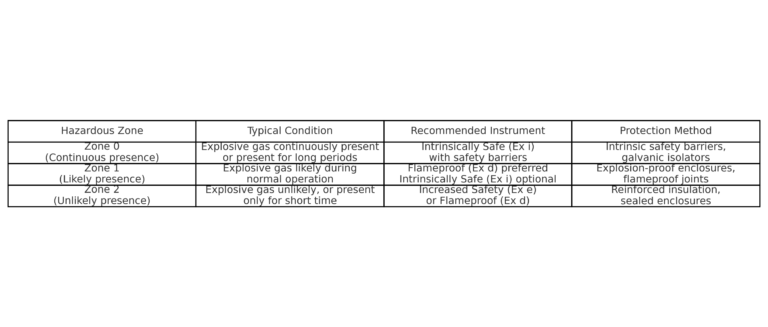
2. Combustible and Toxic Gas Detection
In locations where combustible/toxic gases may leak or accumulate, as well as at fresh-air inlets of buildings, combustible/toxic gas transmitters shall be installed.
2.1 Sensor and Alarm Configuration
Gas sensors shall be equipped with local sound and light alarms.
Signals shall be wired to a dedicated Gas Detection System (GDS) input module (AI card).
An independent GDS operator station and alarm panel shall be provided in the Central Control Room (CCR).
2.2 Portable Detection
Depending on facility characteristics, portable multi-gas detectors (four-in-one) shall be provided for personnel.2.3 Cabling Requirements
Sensors shall use dedicated junction boxes and shielded cables, connected directly to the GDS.
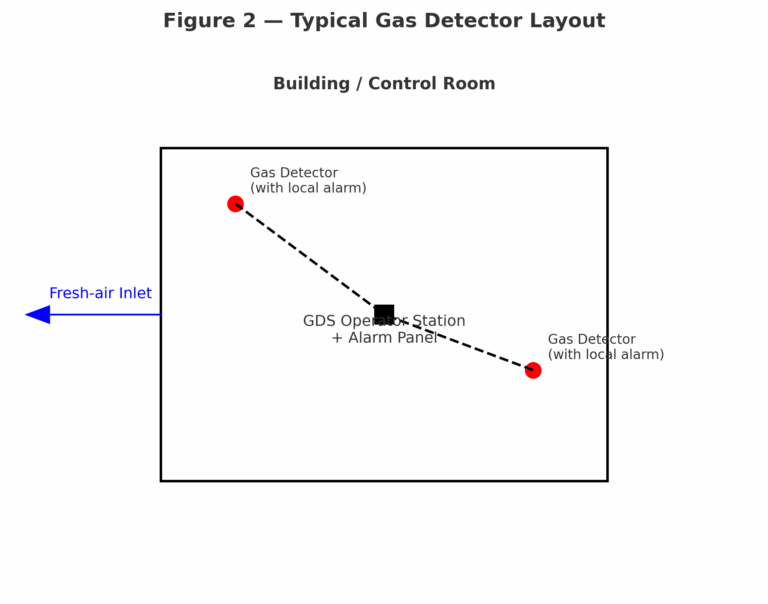
3. Grounding System
Instrumentation grounding shall adopt an equipotential system to ensure both safety and measurement stability.
3.1 System Configuration
The instrument control system shall provide two grounding busbars:Working Ground
Safety Ground
Both busbars shall be connected to the plant electrical grounding grid via two dedicated grounding cables.
3.2 Field Connections
Instrument panels, analyzer shelters, cable trays, junction boxes, equipment housings, and sealing fittings shall be directly bonded to the plant grounding grid through structural frames.3.3 Control Room Connections
Working ground shall be connected to the instrument working ground busbar inside the control system.
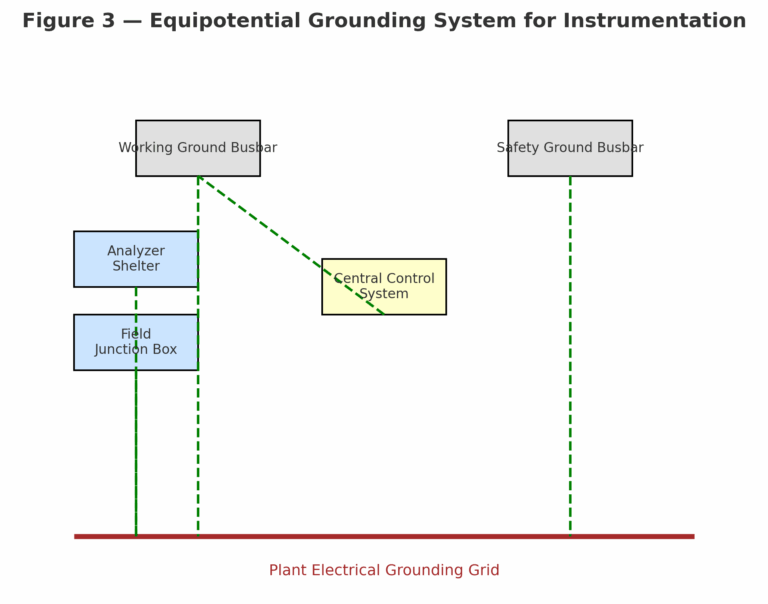
4. Lightning Protection
4.1 Surge Protection
For instruments located outside the electrical lightning protection zone, surge protective devices (SPDs) shall be installed both at the field instrument side and at the control system side.4.2 Distance from Down Conductors
Instrument cable entries to CCR, FAR, or FCR shall maintain a minimum distance of 2,000 mm from electrical lightning down conductors.
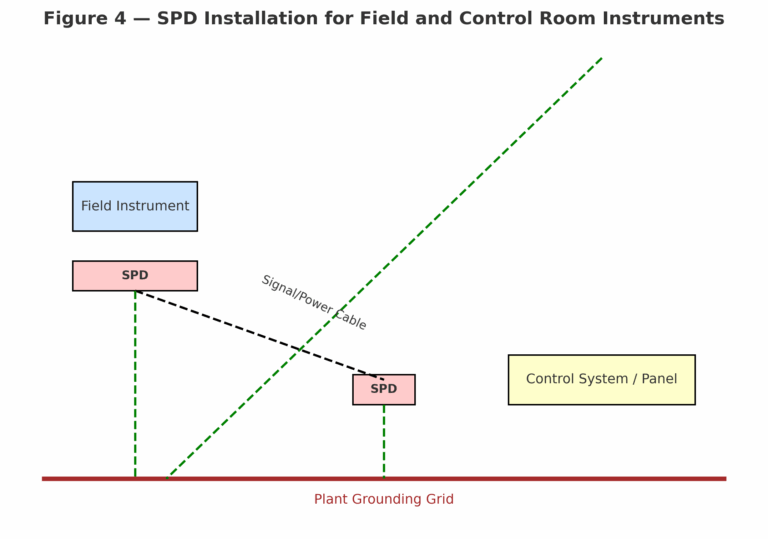
5. Fire-Resistant Structures
Valves used for shutting off combustible media pipelines shall adopt fire-safe structural designs to prevent escalation of hazards in the event of fire.
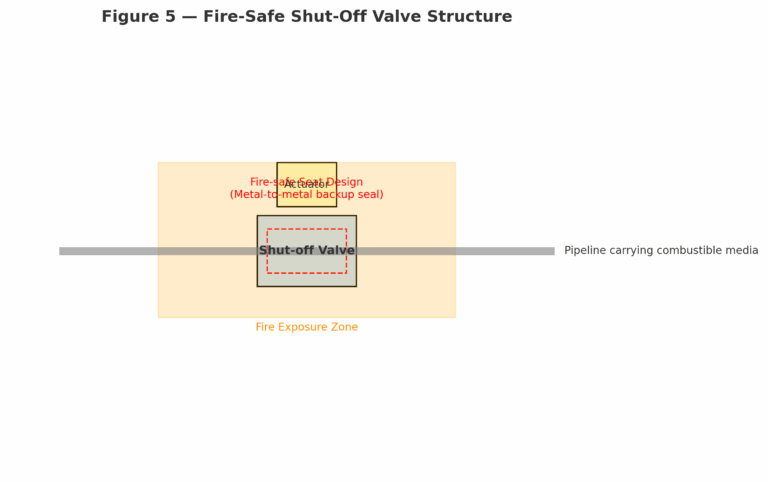
Conclusion
This specification defines the minimum requirements for instrumentation in fire protection scenarios, covering explosion-proof selection, gas detection, grounding, lightning protection, and fire-safe valve design. By combining compliance with international standards and robust engineering practices, the safety and reliability of process instrumentation in hazardous environments can be ensured.
